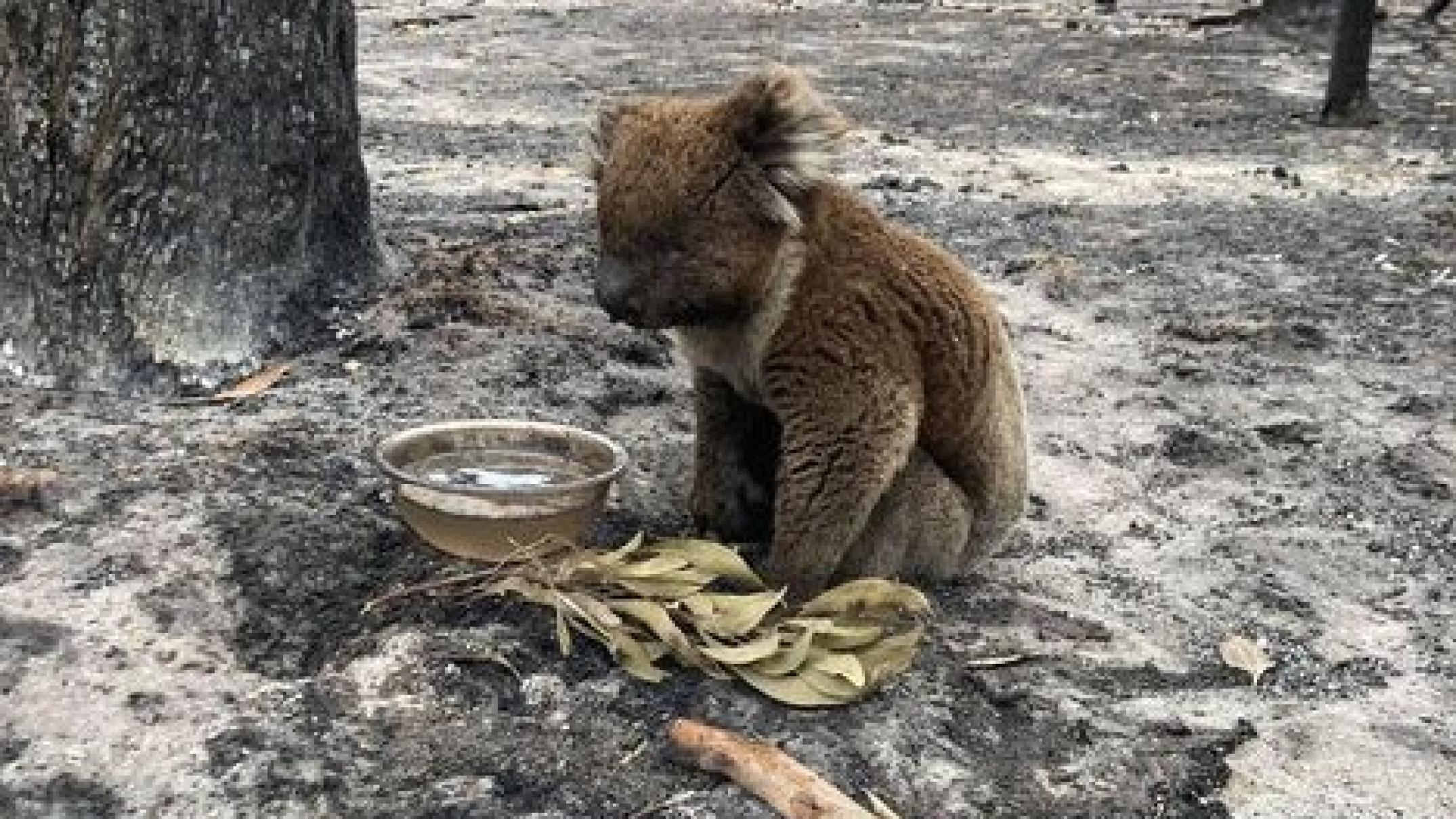A South Australian sanctuary for a diverse array of native animals is showing few signs of life after a devastating fire tore through it last week.
Key points:
- Farmers are helping wildlife affected by the devastating Lucindale fire that tore through SA community
- The National Parks and Wildlife Service is investigating the impact on native animals and vegetation
- A landholder says one of the burnt areas was a remarkably vibrant green corridor prior to the blaze
The Blackford fire burned through some 17,000 hectares of land on the Limestone Coast, including a vibrant wildlife corridor that was home to koalas, kangaroos, emus, wallabies, possums and the “odd wombat”.
Avenue Range farmer Grant Higgins said the blaze tore through more than 60 acres of scrub on this family’s Patanga property.
“It is quite a wildlife haven,” he said.
“Sadly, we had to put some animals down after the fire rolled through the scrubland.”
Mr Higgins said he and his friend Luke Farrell saw a koala drop from a tree onto the blackened ground.
“We checked him over, he was a bit singed, but otherwise he appeared OK,” Mr Higgins said.
The pair gave the koala a drink and transferred him to nearby scrubland, where he scrambled up a tree.
Farm takes heavy hit
Mr Higgins, whose property is about 13 kilometres from the small rural township of Lucindale, said the scrub was home to a growing koala population that was in the direct path of the fire.
He said it was difficult to assess how many native animals died or were injured.
“Before the fire came through, the wildlife went crazy — kangaroos were running and birds were flying everywhere,” he said.
Mr Higgins said the fire burnt about 90 per cent of his family’s farming property, including machinery and sheds.
But the house was saved and livestock loss was minimal.
“It was certainly nerve-wracking when the fire went through,” he said.
Few reports of animal injuries
The Limestone Coast’s National Parks and Wildlife Service manager Nicholas McIntyre said the 40-hectare Vivigani Ardune Conservation Park, north-west of Lucindale, was burnt in the fire.
He said reports of injured wildlife as a result of the blaze had been “minimal”.
“Most larger wildlife such as kangaroos and wallabies were able to escape the fire and have been seen uninjured in the area,” he said.
No reports of injuries to wombats or koalas, which were present in low numbers in the area, have been received by the department.
“Wombats would likely have found shelter in burrows,” Mr McIntyre said.
But there has been an impact on native vegetation, including the loss of paddock trees, which provide important habitat for many species, including the regionally iconic red-tailed black cockatoo.
The loss of the trees could result in reduced habitat and food availability.
“Many native plants, however, are well adapted to fire and will use the fire event for regeneration,” Mr McIntyre said.
A significant population of a nationally critically endangered shrub, avenue cassinia (Cassinia tegulata) was burnt in the fire.
Reports of any injured wildlife can be made by phoning 87 35 1177.




